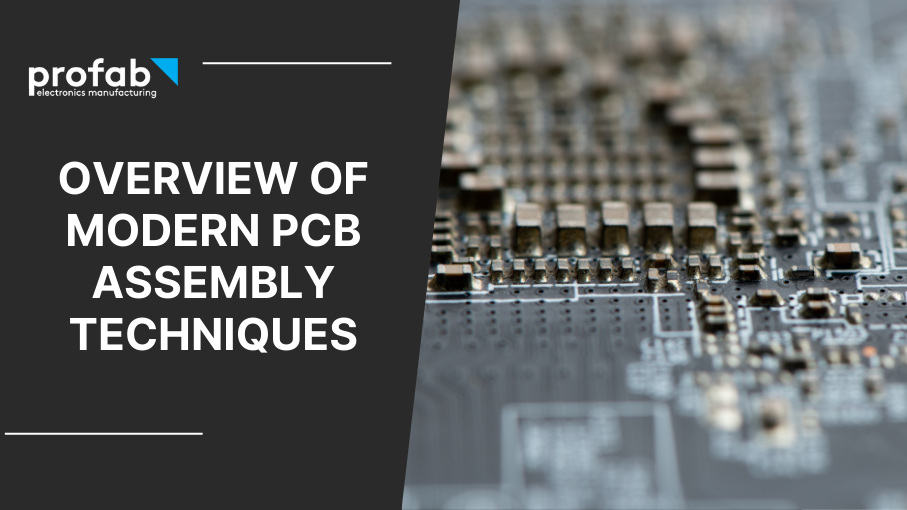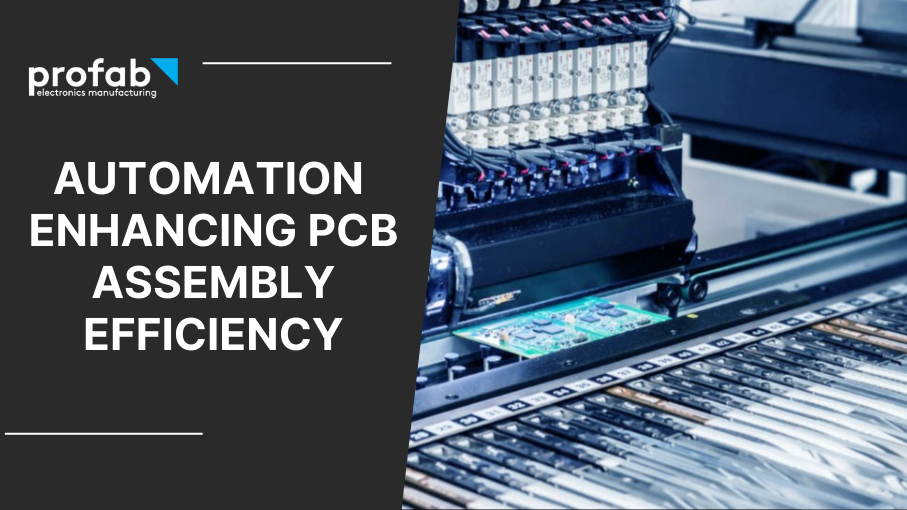
Mastering Incoming Goods Inspection for PCB Assembly Excellence
A Comprehensive Guide to Ensuring Electronic Component Quality and Reliability
At a Glance: Essential Insights
Visual Inspection: Assess the overall condition of packaging and components for visible damage, as it may impact component functionality during PCB assembly.
Documentation Review: Confirm that the received components match the order specifications by verifying purchase orders, packing slips, and additional documentation, such as quality certificates and MSDS.
Quantity Verification: Ensure accurate inventory control and uninterrupted production by counting the received components and comparing them to the purchase order and packing slip.
Sampling: Select a representative sample from the received batch for further inspection and testing, following a suitable sampling plan.
Dimensional Inspection: Measure critical dimensions of sampled components using appropriate tools to guarantee proper alignment and fit within the PCB layout.
Electrical Testing: Verify the basic functionality of the components by testing electrical parameters, such as resistance, capacitance, and voltage, using suitable test equipment.
Functional Testing: Evaluate component performance within the intended circuit or system by conducting application-specific tests, such as testing on a test jig or breadboard.
Reliability Testing: Assess the durability of components used in critical applications or harsh environments by conducting stress tests, such as temperature cycling, humidity testing, or vibration tests.
Inspection Reporting: Document inspection findings, including deviations, non-conformities, or defects, to maintain traceability and support continuous improvement efforts.
Decision Making: Make informed decisions on accepting, rejecting, or quarantining received components based on inspection results, and initiate corrective actions with suppliers when necessary to maintain high-quality standards.
Introduction
The incoming goods inspection process is a cornerstone of quality control in the electronics industry, particularly in PCB assembly. This critical process ensures that only high-quality electronic components are used in the assembly of PCBs, leading to reliable and efficient products. By diligently inspecting components before they enter the production line, companies can minimize the chance of defects, reducing costly rework, and ensuring customer satisfaction.
A well-executed incoming goods inspection process not only guarantees the quality and reliability of received components, but also helps maintain a healthy relationship with suppliers. By rigorously verifying the components and holding suppliers accountable for any discrepancies, companies can encourage a culture of continuous improvement and open communication. This transparency can foster trust between the supplier and the company, facilitating an environment in which both parties work together to optimize quality and efficiency.
The steps involved in a comprehensive incoming goods inspection process include visual inspection, documentation review, quantity verification, sampling, dimensional inspection, electrical testing, functional testing, reliability testing, inspection reporting, and decision making. By meticulously following these steps, companies can ensure that only the finest components are used in their products, contributing to high-quality PCB assemblies that meet the stringent requirements of the modern electronics market. Furthermore, this process can help maintain a competitive edge by reducing the risk of costly and time-consuming rework, while enhancing the reputation of the company among its customers.
Step-by-Step Process for Incoming Goods Inspection
Visual Inspection
A visual inspection is the first line of defense in detecting any obvious issues with the received components. Begin by examining the overall condition of the packaging, as damaged packaging may be indicative of mishandling during transport, which could potentially affect the components inside. When inspecting the electronic components themselves, look for any signs of physical deformities, broken leads, corrosion, or scratches, as these could compromise the integrity and functionality of the components during PCB assembly.
Documentation Review
Thoroughly reviewing the documentation that accompanies the received components is essential to ensure that they meet the necessary specifications. By verifying the purchase order, packing slip, and other relevant documents, purchasing personnel can confirm that the delivered components match the order requirements, such as the part number, manufacturer, quantity, and date code. Additionally, review any accompanying quality or test certificates, compliance documentation, and material safety data sheets (MSDS) to ensure that the components meet industry standards and safety requirements.
Quantity Verification
Accurate quantity verification is crucial to maintain inventory control and ensure that adequate components are available for PCB assembly. Count the received components to confirm that the quantity aligns with the purchase order and packing slip. This is especially important for components delivered in reels, trays, or tubes, as discrepancies in quantity can cause production delays and increase costs.
Sampling
Sampling is a vital step in the incoming goods inspection process that allows for a more in-depth analysis of the received components without testing the entire batch. Select a representative sample of components from the received batch for further inspection and testing. Choose this sample randomly and proportionally to the batch size, following a suitable sampling plan. The goal of sampling is to achieve a balance between the resources spent on inspection and the desired level of quality assurance.
Dimensional Inspection
Dimensional inspection is necessary to ensure that the received components meet the specified tolerances and fit seamlessly into the PCB assembly. Measure the critical dimensions of the sampled components using appropriate measuring tools, such as calipers or micrometers. This inspection process guarantees that the components will align correctly within the PCB layout, preventing assembly issues and potential malfunctions in the final product.
Electrical Testing
Electrical testing is essential to validate the performance of the received components and ensure that they function within the specified limits. Test the sampled components for electrical parameters, such as resistance, capacitance, inductance, voltage, current, or power, using suitable test equipment like multimeters, oscilloscopes, or specialized component testers. This step not only verifies the components' basic functionality but also helps to detect any latent defects that may lead to failures in the final product.
Functional Testing
Functional testing goes beyond basic electrical tests, focusing on verifying that the sampled components work correctly within the intended circuit or system. This may involve testing them on a test jig, breadboard, or even in the final product assembly. By simulating the actual operating conditions of the components, functional testing provides valuable insights into their performance and suitability for the intended application.
Reliability Testing (if required)
For components used in critical applications or harsh environments, reliability testing is an essential step in the incoming goods inspection process. Conduct stress tests, such as temperature cycling, humidity testing, or vibration tests, to evaluate the components' reliability under harsh operating conditions. These tests help to identify any weaknesses in the components' design or manufacturing that could compromise their performance and lifespan in the field.
Inspection Report
Documenting the inspection findings is crucial for traceability and continuous improvement. Create an inspection report that includes details on any deviations, non-conformities, or defects identified during the inspection process. This report should be shared with relevant stakeholders, such as the supplier and the quality management team, to ensure transparency and facilitate corrective actions when necessary.
Decision Making
Based on the inspection results, make informed decisions regarding the acceptance, rejection, or quarantine of the batch of components. If non-conformities or defects are found, communicate the findings to the supplier and initiate corrective actions, such as return, replacement, or rework. Having clear guidelines and criteria for decision making enables purchasing personnel to maintain high quality standards and minimize risks associated with using defective components in their products.
By diligently following the steps outlined above, companies can ensure the quality of electronic components received from suppliers and minimize the risk of using defective parts in their products. This attention to detail in the incoming goods inspection process is an essential aspect of maintaining high-quality standards in PCB assembly. A well-executed incoming goods inspection process contributes to more reliable and robust electronic products, leading to increased customer satisfaction and a stronger competitive position in the market.
To learn more about other inspection techniques such as inspection for counterfeit components, please take a look at another article titled: Avoiding Counterfeit Components: A Comprehensive Guide for Electronics Companies
About Profab Electronics
Profoundly embedded in the electronics manufacturing sector, Profab Electronics has been steadfast in its commitment to deliver excellence for over three decades. Our unparalleled experience, fortified by our stringent quality standards, positions us as a trusted partner in the realm of Electronics Manufacturing Services (EMS).
We're an ISO 9001 and AS9100 certified company, and our adherence to these globally recognized standards attests to our unyielding quest for quality. Our team comprises experts who hold formative training on the latest IPC standards, ensuring that we consistently produce electronic products of the highest caliber.
Our proficiency lies in PCB assembly, offering a spectrum of services ranging from Surface Mount (SMT) to Through-Hole Assembly. From the initial stages of prototyping to high volume pcb assembly, we offer comprehensive solutions to meet client requirements.
At Profab Electronics, we synergize our expertise and experience to deliver high-quality electronic products. Our unwavering commitment to quality, innovation, and customer satisfaction has established Profab Electronics as a leader in the electronics manufacturing industry. Trust us to bring your technological visions to life.
Latest Posts

Learn about our state-of-the-art Surface Mount and Through-Hole Technologies, sophisticated soldering processes, and rigorous quality control methods that define today's industry standards.

Learn about our advanced component placement, solder paste printing, and automated inspection systems that revolutionize the assembly process.

Discover how our adherence to ISO 9001 and AS 9100 standards, IPC solder training, and meticulous inspection processes ensure the precision and accuracy of every PCB we produce, underpinning our unwavering commitment to quality.